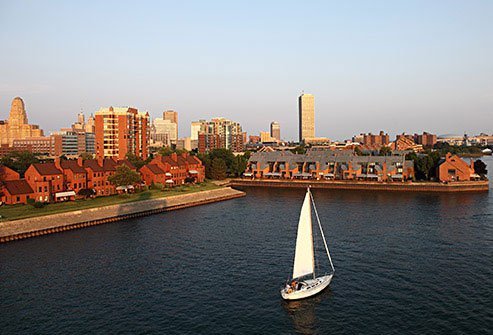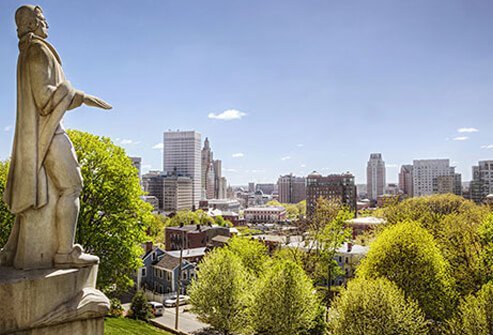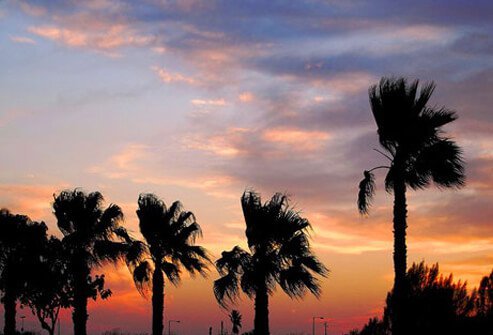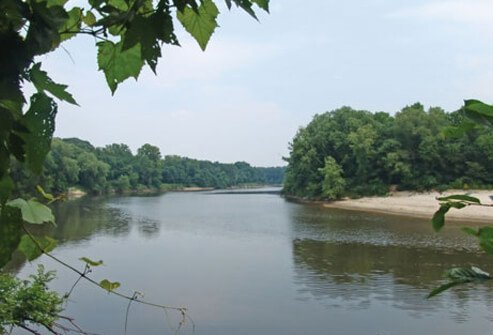10 Worst Cities for Spring Allergies With Pictures
Is Your Town on the List?

Spring has sprung, and so have the sneezes and sniffles that come along with it. Every year, the Asthma and Allergy Foundation of America (AAFA) ranks the 100 largest U.S. metro areas by pollen count, allergy medicine use, and allergy doctors. Has your town made the list for the 10 worst "spring allergy capitals"? You might be surprised: They aren't all in the South!
No. 10: Buffalo, N.Y.

The second largest city in New York leaps into the top 10 from No. 36 in 2015. Super-high pollen scores and above-average use of allergy meds secured its place. This Niagara Falls neighbor has the sunniest and driest springs in the Northeast. That means pollen sticks around longer -- and has more time to make your eyes water. Buffalo has flirted with higher rankings before. It placed 15th 3 years ago.
No. 9: Knoxville, TN

Its pollen levels are on par with most other cities, but people here use more allergy meds than average. That's kept this Tennessee River city in the top 10 this year. If spring makes you sneeze here, pollen from oak, birch, and maple box elder trees are likely to blame. To make things worse, the surrounding mountains trap pollen in the valley.
No. 8: Providence, RI

This northeastern city has once again earned a top 10 spot. (In 2015, it was No. 9.) Oddly, the American Academy of Allergy, Asthma & Immunology doesn't have a pollen counter stationed here. But the city’s daily average temps are heading up. This helps plants grow and make more pollen. This year's report found average levels of the sneeze-worthy yellow dust. But the city had higher use of allergy meds and a lower number of allergy doctors.
No. 7: Oklahoma City, OK

The Sooner State capital drops several slots from No. 3 last year. Yet it still has high pollen scores, thanks to lots of sunshine and trees. Blame your springtime sneezes here on oak, mulberry, poplar, aspen, and sycamore, among others. Warm, dry, breezy days send pollen counts up. The tiny grains can float for miles in the wind. If you've been outside when the count is high, quickly shed your clothes and hit the shower when you get home.
No. 6: Wichita, KS

The largest city in Kansas inches up one spot on this year's list. Weeds and grasses trigger itchy, watery eyes and sneezing in this Midwestern town. Wichita's ranking is based on higher-than-average pollen counts and increased use of allergy medicines. The city also has a lower-than-average number of allergy doctors.
No. 5: McAllen, TX

This city perched in the Rio Grande Valley has teetered mid-list for the last few years. Pollen from mountain cedar trees hundreds of miles away rides in on the breeze to kick off sneeze season early here. Later on, grasses and other native plants like mesquite and huisache join in. Dry weather adds to the sniffle factor. McAllen gets only about 26 inches of rain a year. That doesn’t do much to help wash away the pollen.
No. 4: Louisville, KY

Kentucky's famous bluegrass creates more pollen than any other grass in the U.S. That makes it a world-class allergy trigger. If you have grass allergies, your symptoms will spike here in late spring and early summer. There's some good news for spring sneezers: Louisville's status as an allergy capital is improving. Last year it ranked as the second-worst place in the country for spring allergies. In 2014, it was the top offender.
No. 3: Syracuse, N.Y.

It's known as the Crossroads of New York State, and it vaults into the top 3 after ranking 20th last year. Super-high pollen scores played a role in its surprise appearance. The region is home to tons of hardwood trees, many used to make furniture. Pollen from oak and elm lead to seasonal sniffles and itchy, watery eyes.
No. 2: Memphis, TN

Got allergies? You'll be singin' the blues here during springtime. After a short stint at 4th place last year, Memphis returns to the No. 2 spot once again. Trees that give off spring pollen thrive in this city's warm days and cool nights. The area also makes the list for worst places to live for people with asthma. Close the windows and turn on the AC to breathe easier.
No. 1: Jackson, MS

For the second year, the City with Soul is the worst place in the U.S. for spring allergies. Oak, ash, elm, and hickory trees cover more than half of this southern state. The result: layers of springtime pollen that'll keep you reaching for the tissues. Jackson kept its first-place spot due to soaring pollen counts and use of allergy meds. Unlike others in the top 10, this city has a higher-than-average number of allergy doctors.

